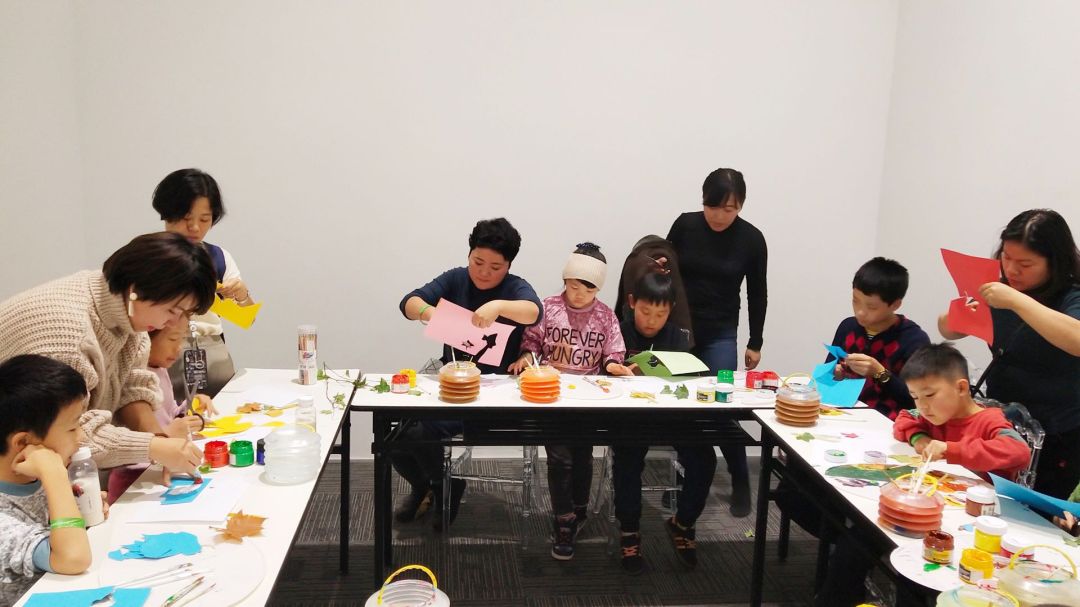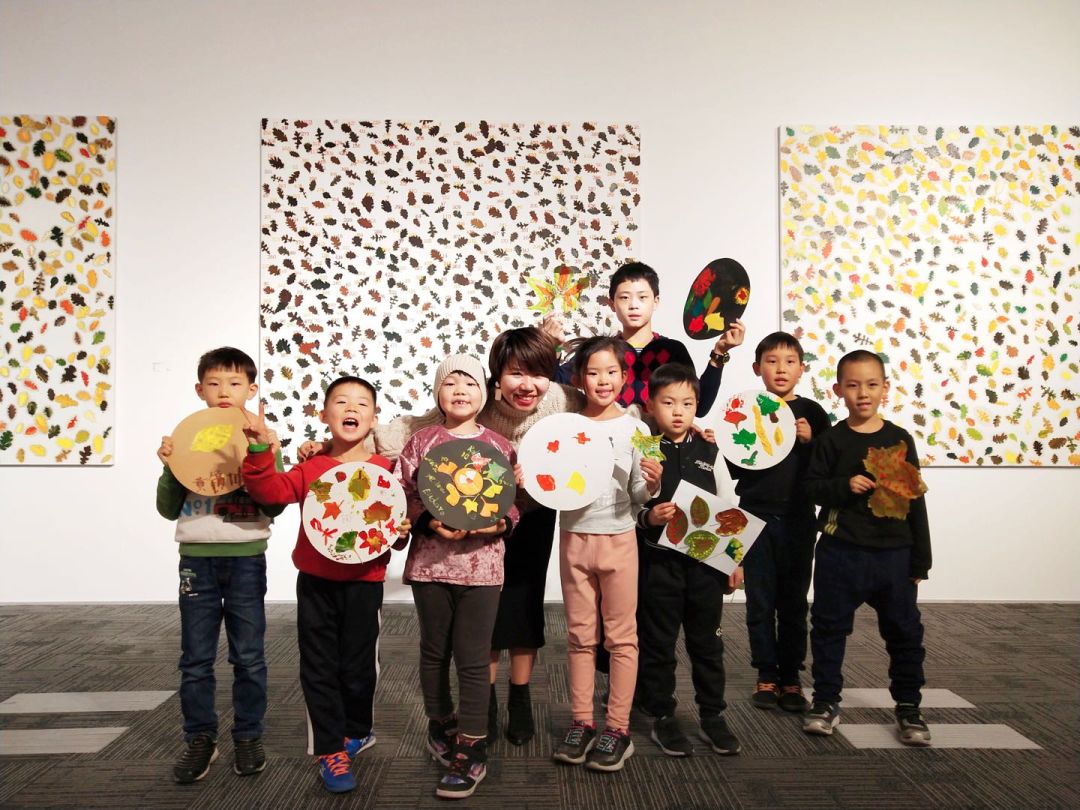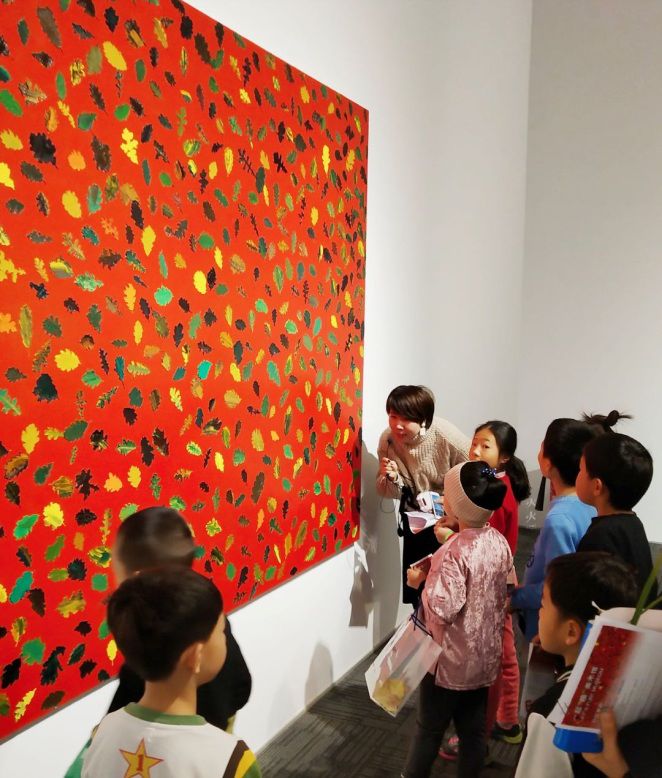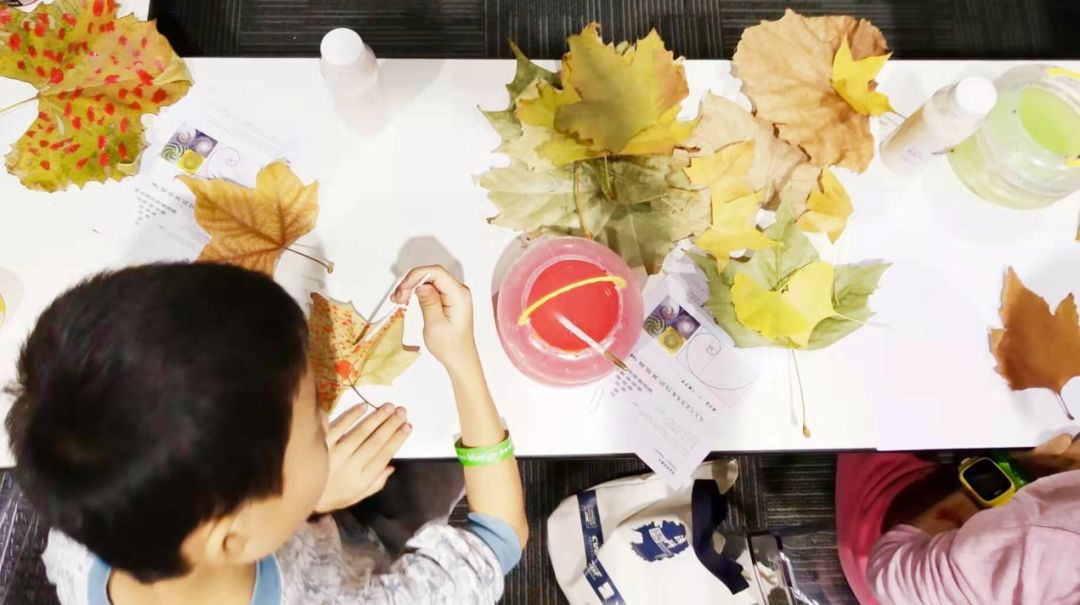The Parkview Museum Beijing successfully organized the public education event for children Fun – Together with Museum – Late Autumn Fairy Tales on November 23, 2019. Autumn leaves simbolize the seasonal change. In this event, inspired by the works of Italian artist Giuseppe Gallo which are on show at the exhibition Briding Asia- Europe III, participating children learned to create their own works with leaves. This workshop left to the children an unforgettable memory of this late autumn.
The leaves, branches, and stones are frequently selected as theme of the artists’ creation. Through detailed observation, we can see that the leaves on the canvas are represented with thick pigment layers which enrich the chromatic composition of the work. The tone of each painting presents different stages of the same season: the more colorful ones for example suggest a mid-autumn setting where bright green or crimson colors complement each other; the ocher tone of painting refers to late autumn when leaves show fading colors as winter is approaching. Through the change of color tones, the artist indirectly represents the alternation of seasons, thus reflecting the progression of the life stage of leaves and allowing each "leaf" to present a different personality. In the exhibition hall, children focus on the observation of the artist's works to grasp the charm of the art with the support of the explanation of museum researcher team.
During the "Mini Lecture Room" session, children learnt the hidden meaning of numbers in the works of Giuseppe Gallo through researcher's explanation. Those numbered leaves are derived from the Fibonacci sequence (introduced with the reproduction of rabbit, also named the "rabbit sequence"), and the important role of the golden section principle in painting. The researcher performs simple series of calculations with children, and looks for creatures that can embody relevant mathematical principles in nature, with the aim to inspire the young participants to pay attention to the subtle principles that exist around them.
The next stage of leaf creation is based on exploring children's ability of color matching, imagination and stroke control. Under the guidance of the researcher, children created a combination of dots, lines, and background surfaces on the leaves. In the final stage, they explored the Italian artist Giuseppe Gallo’s painting praxis and technique. For example, pigment-coated leaves are printed on paper, and leaf outlines are cut out on cardboard for color filling. The teacher constantly encourages children to try different creation methods and share their ideas with the others.
Imagination is more than just practical ability. Children should learn how to express their artistic ideas by sharing them with the others. Under the encouragement of researchers, children named their works separately, and introduced the ideas about their work to the other participants.Their vivid imagination is very surprising. With their amazing design and creation, an ordinary leaf is covered by two colors and it becomes bright flamingo, titled "Changing Life" by the little artist; the work with rich and colorful leaves is titled "My World"; other fascinating works are titled "The Rain Never Stops" and "Two Boats".
Through their explanation, we understand that although children have not yet mastered the proficient painting skills, behind each simple creation there is a thoughtful exploration of the self and a reflection of their own life.
We also invited parents to participate in the activity together with their children. Parents listened carefully to their kid’s thoughts and ideas while helping them to complete the works. In this way, a bridge of trust and empathy between adults and children was established.





